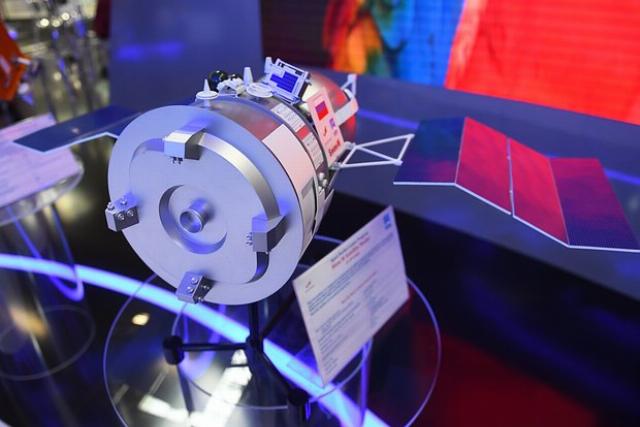The rocket will depart from the Baikonur cosmodrome
BAIKONUR COSMODROME /Kazakhstan/, August 20. /tass/. The Soyuz-2.1b launch vehicle with the Bion-M biological satellite No. 2 will launch on Wednesday evening from the Baikonur cosmodrome and put the device into polar orbit. The device, which has 75 mice on board, is about 1.5 thousand. Drosophila flies and other organisms will help assess the safety of such an orbit for manned missions.
The rocket bears images dedicated to the Day of the City of Moscow, the Eastern Economic Forum, as well as the 35th anniversary of the Ministry of Emergency Situations. Its launch is scheduled for 20:13 Moscow time from site No. 31 at the Baikonur cosmodrome. Approximately nine minutes after launch, Bion will be launched into orbit. The biosatellite will spend 30 days in orbit and land on September 19 in the steppes of the Orenburg region.
There are 75 mice on board the 6.4-ton vehicle, about 1.5 thousand. Drosophila flies, cell cultures, plants (calendula, echinacea, fiscomitrella moss), samples of cereals, legumes and industrial crops. In addition, fungi, lichens, cellular materials and seeds of plants grown from seeds that flew into space on Bionem No. 1 (2013) and Photonm No. 4 (2014) will be launched into space.
A meteorite simulator is installed outside the device, which houses living cells. With its help, scientists plan to find out the possibility of life surviving in the meteorite's thickness when passing through dense layers of the Earth's atmosphere.
The aim of the project is to study how living organisms survive flight in a high-latitude orbit, where the level of cosmic radiation is one third higher than in the orbit of the International Space Station. The research results will form the basis of methods for protecting and supporting manned space flights, including long-range ones.
The Mouse Crew
Bion-M is equipped with 25 boxes, each of which contains three mice of the C57BL/6 line (breed) - the most used line of laboratory mice. This crew is duplicated twice on Earth: 25 mice will spend a month in a vivarium, and another 25 in a stand simulating the biosatellite equipment.
As the head of the Laboratory of Animal Phenotyping at the Institute of Biomedical Problems (IMBP) told TASS in an interview RAS Alexander Andreev-Andrievsky, 15 of them are planned to be kept on dry food, and 60 on pasty. Of these 60 mice, 9 are particularly vulnerable to radiation, 9 are particularly resistant due to pharmacocorrection, and the remaining 42 respond normally to radiation. Such a sample will help to characterize the polar orbit more broadly in terms of radiation.
According to Andreev-Andrievsky, the life support system at Bion-M No. 2 has been completely redesigned compared to the similar system of the first Bion-M. It is more modern in all key indicators.
After returning, the mice will be periodically opened to get a "snapshot" of how they survived the flight and how their recovery took place. So, a number of mice will undergo dissection in the field laboratory immediately after landing, and the rest will be opened on the first, fifth, 15th and 30th days. All this is being done to ensure faster recovery of people after long flights into deep space.
The main pool of data is planned to be analyzed within a year after the mice return. Of particular difficulty is the analysis of video recordings, the total timing of which should exceed two years at the end of the flight. According to Andreev-Andrievsky, to speed up this work, scientists plan to involve specially trained AI.

